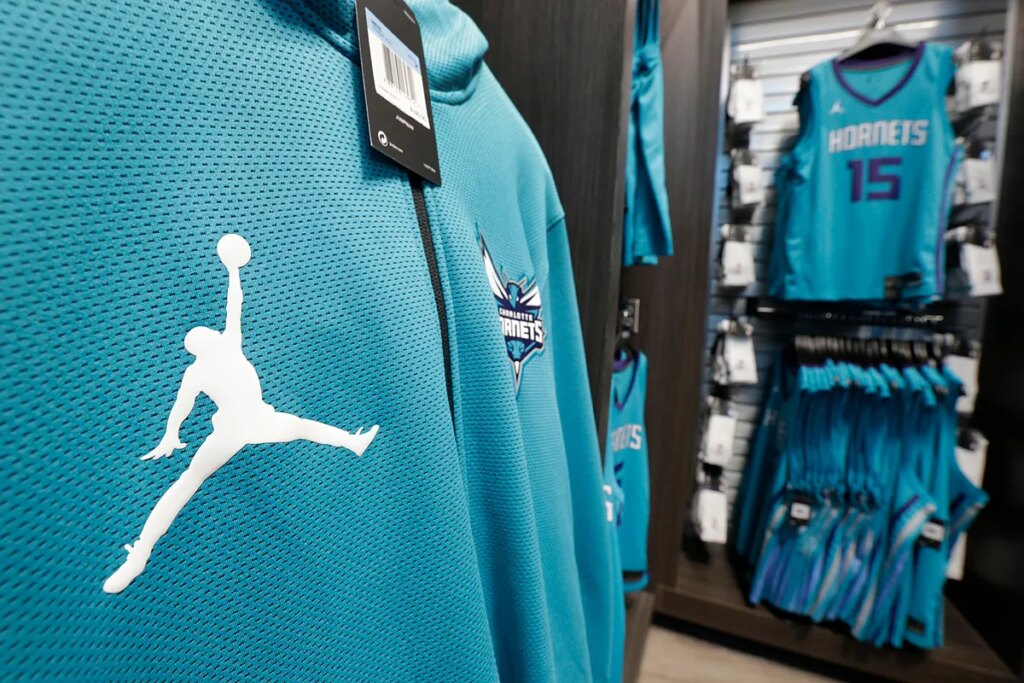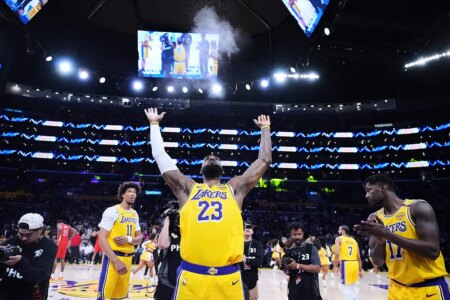As Nike celebrates 40 years of the Air Jordan brand, a long-standing controversy over the origin of the famous Jumpman logo has resurfaced-casting a shadow over the commemorative campaign and stirring debate around intellectual property and artistic recognition.
At the center of this renewed focus is Dutch photographer Jacobus “Co” Rentmeester, who claims he was never properly credited or compensated for the image that allegedly inspired one of the most recognizable sports logos in history.
His assertions, which gained wider attention after the JUMPMAN documentary premiered at the 2023 Tribeca Film Festival, have reignited criticism of Nike’s business ethics and approach to creative licensing.
In 1984, before the Jordan brand even existed, Rentmeester was assigned by LIFE Magazine to photograph a young Michael Jordan at the University of North Carolina.
During that shoot, he instructed Jordan to leap into a dramatic ballet-style pose-arms stretched, legs extended, palming a basketball in mid-air.
Notably, Jordan wore New Balance sneakers and Adidas socks in the original frame, a subtle detail that undercuts any claim of this being a Nike-directed shot.
“I didn’t take the picture. I made the picture,” Rentmeester said in the documentary, asserting his role in creating the visual concept behind what would later become the Jumpman silhouette.
According to sneaker expert Nick DePaula, Nike later paid the photographer $15,000 for a limited license to use the image internally, with no long-term use rights or additional work guaranteed.
Soon after, Nike launched the Jordan brand and the now-iconic Jumpman logo-strikingly similar to Rentmeester‘s original photo-began appearing on billboards, sneakers, and merchandise worldwide.
Rentmeester eventually took legal action in 2014, alleging copyright infringement. However, in 2018, an Oregon judge dismissed the case, ruling that the pose, while similar, lacked the “substantial similarity” necessary for legal protection. Among the cited differences were Jordan’s hand positioning and body angle.
Despite the legal outcome, many fans believe Rentmeester was wronged and continue to push for public acknowledgment or compensation.
Fans Call for Nike to Do the Right Thing
On social media, the response has been overwhelmingly sympathetic to the photographer. “It’s amazing how companies do everything to not pay the people that deserve it,” one user wrote. Another added, “Nike’s a billion-dollar company. Give the man what he seeks before he leaves this earth.”
Some fans have proposed creative solutions-such as a limited-edition colorway collaboration to honor Rentmeester‘s influence-while others are simply shocked that the original image, which helped shape a global brand, netted just $15,000.
Although legal precedent is on Nike’s side, critics argue that ethical considerations should compel the brand to revisit the situation. “Wow! They done made billions off that pic and all he’s gotten is 15k,” read one widely shared comment.
For Rentmeester, now 88, the battle is no longer just about money-it’s about credit. His short film JUMPMAN is part of a last-ditch effort to tell his story, backed by photographic evidence and reenactments from that pivotal 1984 shoot in Chapel Hill.
Whether or not Nike responds, the controversy has stirred broader conversations about creative ownership, corporate accountability, and the value of artistic work in commercial success. With the Jordan brand’s legacy front and center in 2025, the questions surrounding its origin story are proving harder to ignore.
Read the full article here











